Typical scheme of the heating system. Schematic diagram of the heating - types and features
Schemes and drawings of heating
Contents: What they do What is calculated Example of detailed calculation No doubt, most homeowners will agree with the statement that an independent heating system is much better than the central heating. Many people want to heat their homes by themselves. The main reason for this desire lies in creating the optimal combination: warmth-comfort and economy. Even despite the costs that are inevitable with the initial installation, ...

Content: What determines the cost of heat The cost of the boiler in the 20 kW. Electric Fuel Oil Gas Heating with wood Useful tables As practice shows, the heating system is not only a source of heat and comfort in a private house, it is also the cost of fuel and maintenance, as well as cash injections for its construction. The main guideline that ...
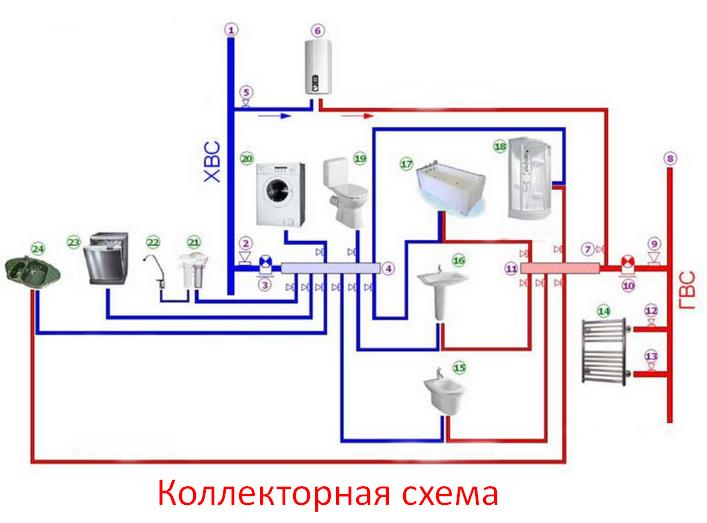
Contents: Collector scheme Benefits collector Serial Advantages of sequential The operability of equipment connected to the water supply system depends on the correct installation. It is important to choose the right water supply scheme for the apartment, which will ensure timely supply of water from the central water supply to all points of analysis. At the same time, it is necessary to ensure sufficient water pressure for correct operation of all sanitary equipment and household appliances. In the present ...

Contents: Single-pipe system Scheme: Single-pipe horizontal Scheme: Single-pipe vertical Two-pipe system - schemes The layout of a heating system in a private house can be done in various ways. And the owner is required to decide on which method will be preferable in this particular case in order to solve the issue of heating the room with a strictly limited budget. A single pipe heating method in a private house is considered ...
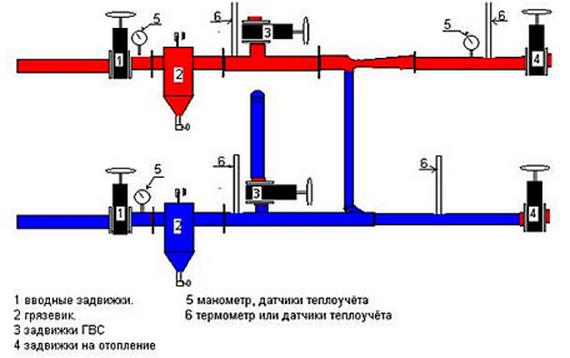
Content: Why is it needed? Principle and scheme of work The main elements of the device Today it is impossible to imagine your life without heating. Even in the last century, the most popular was the furnace. In our time, it is not used by many. The main disadvantage of stove heating is the cold floor. All air rises, and thus the floor is not heated. Technical progress has advanced far ...

Content: The main parameter - power Calculation of the required number of sections Among a large number of consumers, the most popular device for heating is a radiator. In a way, it is a classic variant of the equipment of the heating system. A battery is a hollow element that is filled with a substance - a coolant, whose role is usually played by water. When choosing a radiator, you need to pay attention to several technical factors, ...
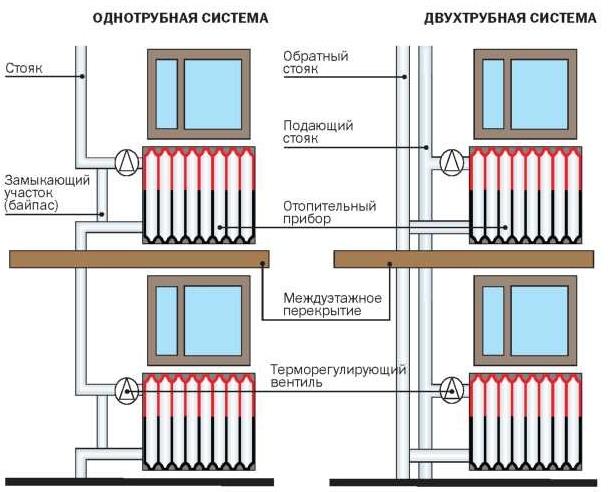
Contents: When to change: in winter or in summer. Sequence of work. Connection to a single-pipe system. Connection to a two-pipe system. Over time, the efficiency of the heating system decreases and there is a need to replace one or another component. Independent replacement of parts of the heating system is on the shoulder to anyone, it is enough only to have theoretical knowledge in this matter and the tools necessary to work. The most common reason for replacing ...
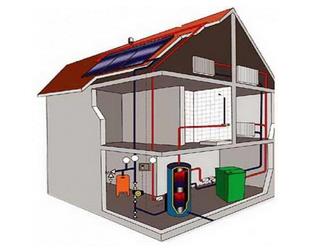
Contents Standard wiring Single-circuit system scheme If you need a warm floor In order for your house to be heated constantly and without extra costs, you must be as responsible as possible to design the heating system and choose the most competent solution. In this case, each is faced with the choice of the most optimal option with the available financial opportunities, in addition to this very much will depend on ...

Content: Single-pipe system scheme Two-pipe system scheme No matter how the world changed, and technology for many people, private houses are still still associated with a one-story building. Perhaps many were rooted in Soviet stereotypes, or simply there were times when it was necessary to control their spending on building materials, as well as the amount to which it would cost ...

Content: What to consider when choosing a boiler? Calculation of the heating boiler capacity. Which pipes are better to take for installation? Calculation of the required number of radiators When building a house or renovating a residential facility that has been in operation for several years, it is necessary to adhere to the standards specified in the project documentation. Required documents include the calculation of heating a home or other residential building, ...
Considering the concept of heating a private house, you need to pay attention to the variety of systems and options for piping. At the same time, piping plays a huge role in the efficient operation of the heating system. The size of the house is also very important, and the bigger it is, the more difficult the junction is.
In order to thoroughly understand all these subtleties, it is necessary to consider what parts the main unit of the heating system consists of. We are talking about a boiler with all nodes, devices and equipment adjacent to it.
What is strapping
Schematic diagrams of the heating system
This is all that is located between the heating boiler and heating devices - radiators. Recall that the boiler is just a heating unit that transfers the energy of the used fuel to the coolant. The coolant, entering the radiators, through them gives off thermal energy to the air inside the room. So everything is quite simple. This is the schematic diagram of the heating system, which at first glance is simple, but in fact quite complex.
Why? Because the system without additional nodes will not work effectively. So, it will require large expenditures on fuel and expenses from the family budget.
What is necessary to provide, in addition to heat generation system?
Some nuances
- Provide coolant circulation in a certain mode. Someone may think that this is not necessary. After all, the heated water will still circulate in the system according to physical laws. With this, no one argues, but there are a number of schemes in which the coolant is unevenly distributed. For example, a single-pipe horizontal circuit, in which the last radiators always have a lower temperature, which affects the quality of heating in such rooms.
Note! Today, many boilers have built-in circulation pumps in their designs. This facilitates the selection and makes the calculation unnecessary. The main thing - to choose the right heating boiler for power.
- Compensate for linear expansion of hot water in the system. For this purpose, an expansion tank is included in the scheme.
- Provide a safe operating environment for the heating system, including the boiler, if for some reason the coolant pressure becomes extreme.
- Create conditions under which you can freely remove air from the circuit.
- Establish a system that will be responsible for the quality of the coolant. Otherwise it may lead to contamination of the pipeline with slags, sand, scale and other things.
- Provide the ability to connect in the same system multiple circuits with different temperatures. For example, the main circuit connecting the radiators and the "warm floor" circuit.
If we take into account all these indicators, the heating system of a private house will be economical, safe and convenient in operation.
Strapping elements and their functions
We have already listed the elements of strapping, and it remains only to consider them separately.
Circulation pump
Why do we need pumps in the heating system, it has already been mentioned. But this is not their only function. What else makes it necessary to install this device?
- First, the complexity and length of the pipeline scheme.
- Secondly, the temperature difference between the radiators closest to the boiler and the far ones.
- Thirdly, there are cases when, for example, antifreeze having a denser structure is poured into the system instead of water as a coolant. It may take a long time until it heats up and reaches the batteries. The pump accelerates this process.
Circulation pumps are installed on the return line near the boiler, where the coolant temperature is lowered. This is done in order to keep the device in a combat-ready state for a long time. Indeed, in the design of the pump there are rubber products in the form of gaskets, cuffs and seals. And under the influence of high temperatures, they quickly fail.
Scheme for home heating
Its main task is to remove air that is collected in the system and interferes with the movement of the coolant. By the way, the accumulation of a large amount of air in one place can completely block the circulation of the coolant. If the radiators are connected to the highway with a lower liner, then the air gathering in their upper part will do everything so that the heaters do not work. This can be avoided by installing a circulation pump in the circuit. But even in such a system, the air under pressure will create vibrations and sounds, which is unpleasant.
What could be the air vent? Let's start with the most common and popular - Mayevsky's crane. This is a simple fixture made of steel or brass. The second option is better. A stem is built into its body, which opens the side opening in several turns. It is through him that the air is released. And as soon as the water goes, the stock closes. That's how simple it is.
The second option is an outdated model. A conventional drain cock or valve is installed on the side of the radiator in its upper end. Open it, flush the air with plenty of water and close it again.
If you decide to install a drain valve as an air vent, then consider two warnings:
- The tap spout should always be pointing upwards. In this position, the air has almost no chance of lingering in the radiator.
- Use valves or taps with a ceramic crane for this purpose. Rubber under the action of high temperatures will not last long. And this is fraught with various troubles.
Automatic air vent - the most modern version of this type of devices. With it, the air is released in the automatic mode, so that nothing should be twisted. It is more convenient to use, but it costs a little more than ordinary air vent.
Sump
Great importance today is paid to the quality of the coolant. Some models of heating boilers sensitively react to the properties of the water used. And if solid fuel units can work on any water, then electric and some gas to its low quality are not indifferent. This is especially true of heat exchangers, which are gradually clogged with lime deposits and sand. The same can be said about the circulation pumps. Their impeller quickly fails if the water inside the system is of poor quality.

Gryazevik in heating
What is a sump in an autonomous heating system? This is a common coarse filter made of brass, inside which is a grid. It delays slags, and at the bottom of the device there is a sump. By the way, such filters have a collapsible design, so cleaning is very simple.
What nuances need to pay special attention? It is necessary to install a drip pan either in front of the boiler or in front of the circulation pump. Usually the device is placed horizontally so that the tank is in an upright position. This simplifies the process of cleaning the filter and increases its efficiency. A prerequisite is to install shut-off valves on both sides of the sump. This will help to clean the device without draining the coolant from the system.
And the last. How to choose a gryazevik? Its design is the same in different models, and it is only important to choose the right size. But even if you make a mistake with the size down, the filter will not work worse. Just have to shorten the period of service. That is, more often to clean, but this, as practice shows, takes a little time.
Conclusion on the topic
We hope you understand what is tying heating boilers, and what are its elements. Of course, without exception, we did not examine the devices, but only dismantled the main ones. But this is enough to create an efficient heating system. The main thing is to correctly select everything for the boiler capacity - its volume, the size of pipelines and the number of radiators. So this process is not as simple as it seems at first glance.
Rating: 4 855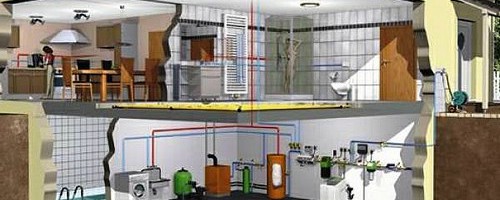
Before installing the heating system in the house, it is necessary to design it. When (diagrams and drawings) it is important to do them with the appropriate symbols.
This is necessary so that during further operation you can navigate in a functioning system. Focusing on it, you can easily find the damage and repair it as soon as possible, since you will know the causal relationship between the components of the heating system.
Legend
There are special programs that help to design the heating system of your house correctly. Each has its own conventions. They serve so that everyone can understand the drawing.
And accordingly, for general accessibility and ease of reading the card of the heating system, each of its components is indicated by a specific lettering:
- “P” - supply systems, exhaust, installation systems;
- "B" - installation systems;
- “U” - air curtains;
- "A" - heating units.
These symbols will be used for elements of the heating system.
The following symbols will be used to calculate the forced heating system:
- "ST" - water tower OS;
- "GTS" - the main water tower OS;
- "GV" - a horizontal branch;
- "K" - compensator.
The heating system as a whole will be called "OS".
The circuits present us with a heating system with the above markings. On the OS plan are shown as dots.
Their diameter is about 2 mm. Heating systems in section, its drawings or diagrams are reproduced on the following scales:
- Ventilation and heating installations
- Scheme-accommodation, plan - 1 to 400, 1 to 800
- Sections and plans - 1 to 50, 1 to 100;
- Ventilation message and OS:
- Sections and plans - 1 to 100, 1 to 200
- Fragments of cuts and plans - 1 to 50, 1 to 100;
- System nodes - 1 to 20, 1 to 50;
- Schemes - 1 to 100, 1 to 200;
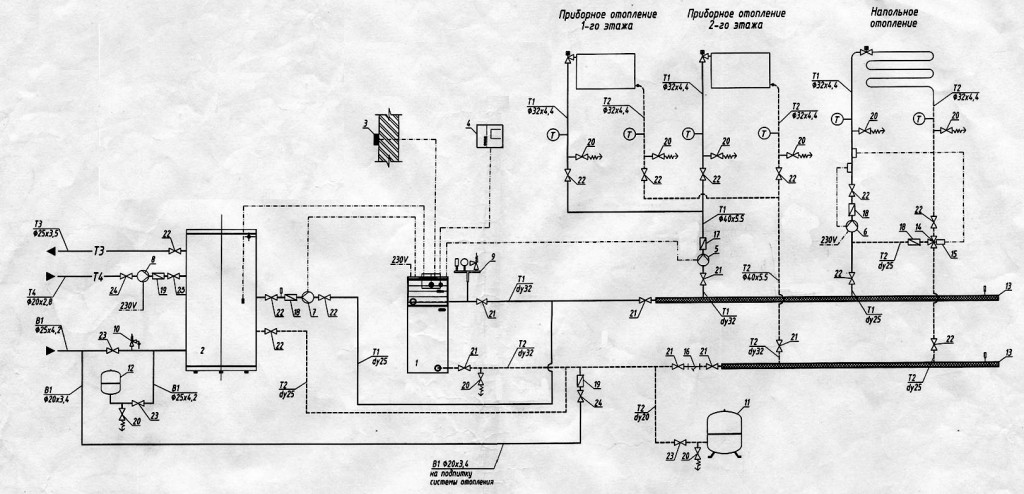
Schematic diagram of heating
When designing the above data in detail, the scales are used - 1 to 2, 1 to 5, 1 to 10. Operating systems are not designed separately. More precisely, their separate image is not found. Most often, one drawing, a scheme combines the image of a heating system, a ventilation system and an air conditioning system in a room.
Kinds of images
For proper maintenance, plans need to provide for images of center parallels and the length between them, the main sites and the finished floor covering on the floor, the diameter of the section and sewer communications, air circulation system. It should also be displayed how many heat transfer fluids and what the length of radiators and many other equally important details.
Drawings and diagrams of the heating system, and as we have already found out, the remaining communications can be performed in different variants of axonometric projections. For people closely studying drawing and geometry problems with the concept of axonometry will not. However, for those who are far from this area of knowledge, we present decoding.
Axonometric scheme (or projection) for heating is one of the ways to display geometric objects in the drawing using parallel projections. Divided into three types - isometric projection, dimetric and trimetric. By the number of axles - equal to three, the same two and distorted three. This is how the plans of heating systems with other communications are carried out.
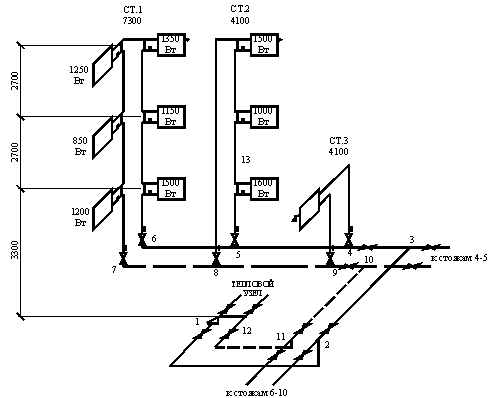
Axonometric circuit
Give the name of the drawings as follows. When the scheme is executed at a certain height of the building, it is called the “Plan at the level of 3 thousand”. Performing a drawing for heating the floor space, he is given the name “PLAN of 2-5 floors”. And the completed drawing of one floor of the house, but on different planes will be called “PLAN 2-2” or “PLAN 6-6”, etc.

Plan 2 floor single pipe system
Heating systems and other communications (ventilation, air ducts, water supply) are reproduced in one of the types of axonometric projections. This is an isometric frontal scheme. Components of systems are indicated by conditional graphical values.
If the length of the OS, air duct, water supply system is large and complexly designed, then they will be shown in the drawing with gaps.
Graphic symbols represent all components of the heating system. When depicting a heating system, all diameters of pipes of any supply are taken into account, their degree of inclination (slope), the number of risers and their dimensions, and much more.
If a heating drawing of an apartment building is being drawn up, then the main heating system is displayed only the one that is underground. For the above-ground part of the building, a wiring diagram for the heating pipes, heat pipes and batteries wiring is prepared.
Planning in the heating of the ventilation system includes the following indicators: the diameter of the ducts, the volume of air capacity, the number of pipes and others.
Hatches and openings in the duct or ventilation required for repairs or measurements and air samples are also displayed on the general scheme of the heating system. Indicated and their brand. The drawings of the heating system should include all sorts of details and features of the pipeline, buildings, partitions, etc. All this is necessary for the proper subsequent operation of the OS, its repair and other necessary work. It happens that several operating systems are located in the same building and function at once. In this case, the diagram indicates its number.
The executive scheme for heating is carried out not only in a general view, but also in a section. They indicate the installation rules of the heating system. The use of burdening parts in the scheme complicates its perception and reading. That is why the cuts of parts and their complete drawings are made simply, without unnecessary.
It became absolutely clear that the presence of drawings showing the structure of the OS in the house is extremely necessary. To perform such a scheme, it will be necessary to know the generally accepted conventions and letter marks, to have drawing skills. You will need to know this in order to read the already prepared plans, for independent repair.
Your contacts in this article from 500 rubles per month. Other mutually beneficial cooperation options are possible. Email us at [email protected]
The schematic diagram of the heating system is the simplest scheme, with the help of which you can quickly and inexpensively install a high-quality and durable heating system. But during the implementation of the project one should know several important rules and features, without which you simply cannot cope with the task.
So, any concept consists of boilers and pipes (in the article we will talk about autonomous systems). The principle of operation of such a scheme is as follows - the coolant is heated in the boiler and, with the help of a circulation pump, is fed through a pipeline to the radiators. Having given up the heat to the room, the coolant returns along the return loop to the boiler and everything repeats. It turns out that the simplest scheme is based on cyclical processes.
Heating schemes
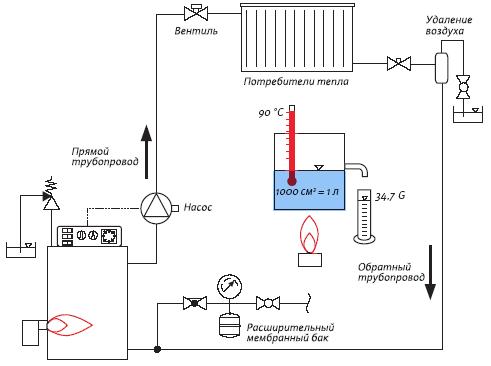
Water heating - the most common option for heating rooms of any type. In most cases, the role of the coolant here is performed by water that is supplied from the boiler to the radiators of heating.
In general, experts distinguish between two types of water systems:
- With the natural circulation of water (when pressure forms in the circuit itself);
- With forced circulation (water enters the pipes and radiators with the help of a circulation pump).
In any concept must necessarily be available:
- Heating boiler (of any type);
- Main riser;
- Reverse riser;
- Pipeline;
- Return pipe;
- Radiators.
So, today known the following concepts of heating:
- With lower and upper wiring method;
- Horizontal wiring;
- Single pipe;
- Two-pipe.
Top wiring
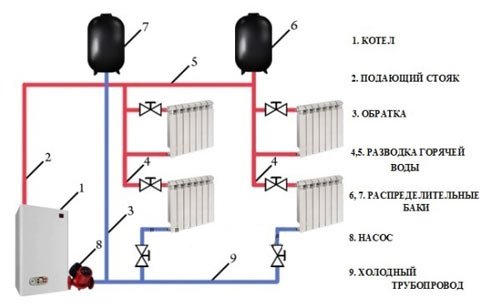
In this scheme, the coolant is heated in the boiler and due to its density rises in.
Attention!
This scheme involves locating the expansion tank at the highest point of the heating system.
Further, through the pipeline (which, by the way, should go under a slight bias) the coolant enters the hot risers. These risers stretch from the uppermost floor of the house to the first and run along the entire height of the building. Spent coolant, in turn, is simply displaced by hot water and returns to. To adjust the level of hot water supply to the radiators, special shut-off valves are installed.
Lower wiring
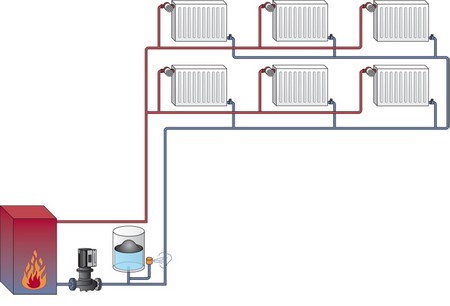
The system with the lower wiring has a main (supply) pipeline that provides all other risers below the level of the residential premises with the coolant. As for reverse risers, they are attached to the general “return pipe”, which was carried out even lower.
Note!
This scheme contains in its structure the air line located on top.
With its help, all the accumulated air in the radiators is automatically removed, which in turn is discharged through the expansion tank.
Twin tube systems
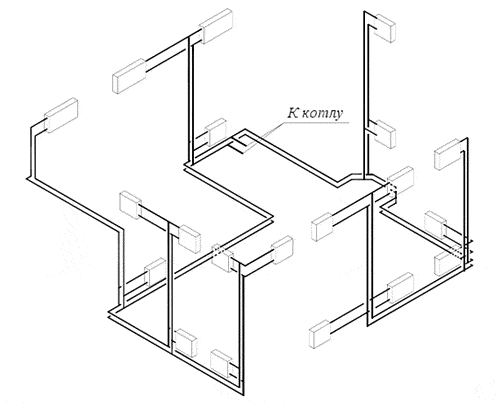
In any two-pipe scheme, both at the top and at the bottom of the wiring, the heated water rises up and through the pipeline enters the radiators, where it cools over time and becomes heavier. On the reverse risers, the cooled coolant flows into the return pipeline and returns to the boiler. Cold water has a greater density and mass than hot water and thus itself displaces it into the pipeline, creating natural circulation even without a pump.
Single pipe systems
![]()
At its core, this is the simplest scheme (see photo) that you can make and assemble with your own hands even to an inexperienced person. It differs from the two-pipe in that having given up its heat on the upper floor, it is already less transferred to the lower one. It turns out that the coolant overcoming floor by floor is gradually cooled and it turns out that the inhabitants of the first floor receive the least heat. In order that inhabitants of the lower floors simply did not freeze, engineers added additional for inhabitants of the lower floors.
Also, the problem can be partially solved by installing special jumpers on each radiator. With jumpers, some of the hot water goes to the floor below without cooling.
It should be noted, and the fact that the main riser in a single-pipe system should be protected as much as possible from heat losses. Otherwise, the system will lose not only heat, but also the power of water pressure, which will adversely affect the heating of the house as a whole.
As for the return line, then it is the opposite - you can not isolate in any case! This is due to the fact that colder water has more weight and, accordingly, displacing hot water, creates a stronger pressure.
Single tube systems with horizontal flow system
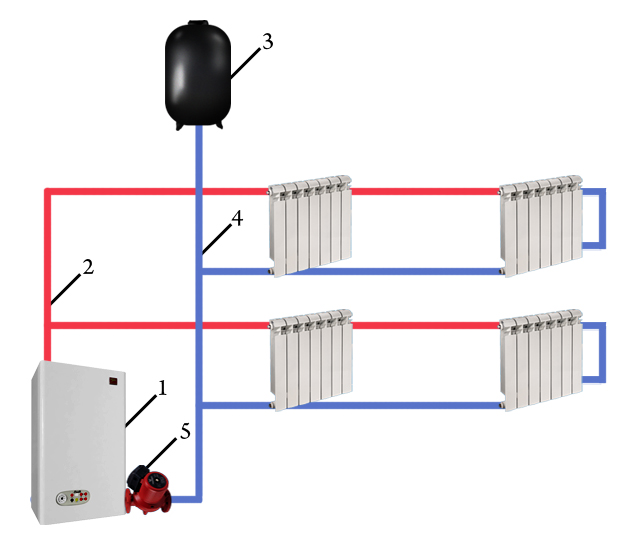
This scheme is attractive because all the radiators on the floor are connected in one line. The main advantage of such a system is ease of installation. Also, you will need significantly fewer pipes and risers.
If we talk about the shortcomings, then the main one is the tendency of such a system to the occurrence of air traffic jams. This problem is solved only by installing automatic air release valves (Mayevsky cranes).
Note!
For those who do not know - the schematic diagrams do not contain any measuring characteristics, but only show what connects with what and shows the approximate “strapping” of the house.
Methods of circulation - which one to choose

Now, with regard to the method of circulation - which scheme to choose? With natural or forced?
As for the natural circulation of the coolant, then there are probably more minuses than pluses.
- Natural circulation is not amenable to automatic regulation;
- For its arrangement, pipes with large diameters are needed, the price of which is significantly higher;
- Not very aesthetically pleasing in the interior;
- This system can be adjusted only with your own hands - in the boiler you can only increase the flame when it is cold, or vice versa, reduce it when it becomes hot.
If you live in regions where an unexpected power outage is in the order of things, then these systems are ideal for you.
In this scheme, no additional (electrical) devices and devices are provided:
- Safety devices;
- Overflow valves;
- Electrical temperature sensors;
- Fuel regulators, etc.
- Another disadvantage of this scheme is a significantly larger amount of fuel consumed for the heating season.
As for the benefits, then in essence it is the most reliable scheme that can last up to 40 years without repair! It is extremely reliable and does not depend on any voltage drops. In general, apart from the boiler, there is basically nothing to break in it.
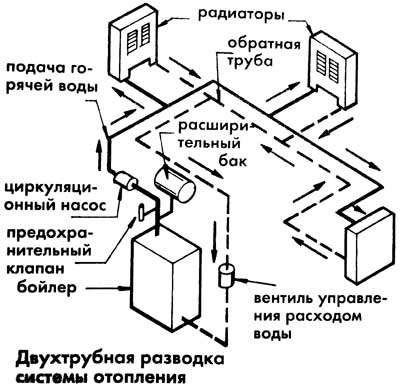
Forced circulation is convenient and comfortable for residents of those regions that do not suffer from power surges. In this case, the system is regulated both manually and automatically - for each room you can set a personal temperature exclusively for your needs.
But automatic systems have their drawbacks - not every local installer will be able to mount a complex scheme with all the sensors you need and complex connection nodes, and hiring a non-resident specialist is quite expensive.
Also, in its essence, this system is very gentle and will not work for a long time in the house where there are power outages.
Summarize
Having considered all the options, it will be easier for you to make a decision and make the right choice, based on your housing and financial conditions. We have a detailed video instruction that will highlight all the questions in more detail, and will help you understand the intricacies of schematic diagrams.
The price of equipment is different, so there is no unambiguous opinion and cost - each boiler and each scheme require an individual calculation, but you should immediately say that it will cost you a serious "penny". Successes!
